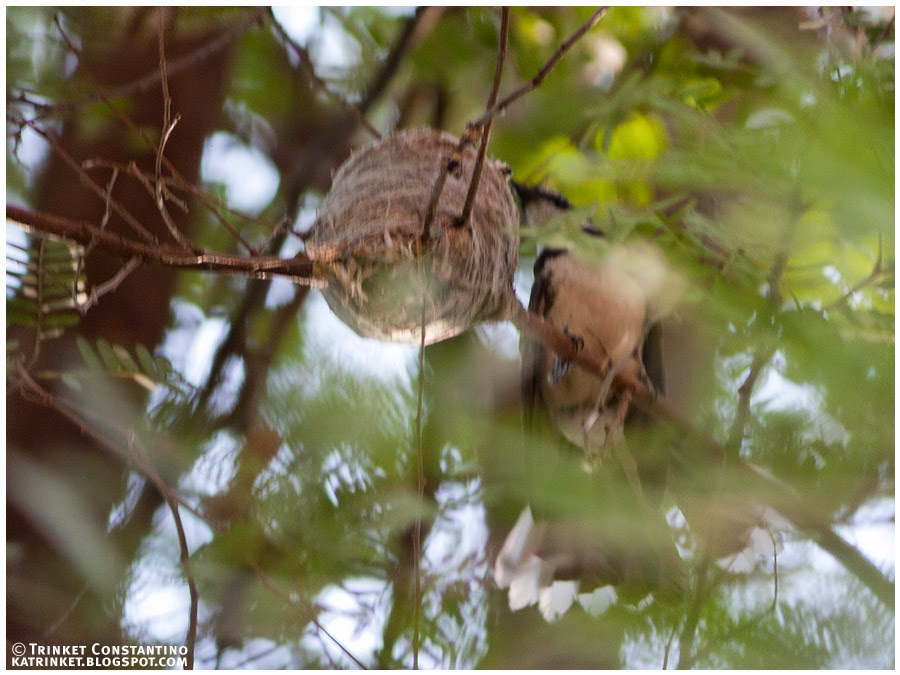We arrived straight from Ilocos at 730am, and I was delighted to find the fantail chicks already out of the nest and jumping around the branches of the tamarind tree. Their parents were busy as ever, searching for food and feeding the young ones. It was a nice view from the second floor bedroom window, I tried to get a photo, but it turned out a bit blurry because of the screen.
 |
| Parent and child: an artistic filter care of a dusty screened window. |
During the week, before leaving for work, I would do a quick round of the garden to try and spy the bulbuls. My mom said that she had seen them on Sunday on a bush a few meters away from the nest tree. They stayed in the area and were quite easy to find, one just had to listen carefully for excited chirping and tweeting and look carefully for the parents coming back and again.
I had a chance to get home from work with the sun still up on Thursday, so I had more time to check on the birds.
The fantails had moved on to the neighboring mango tree. They were pretty high up, but they were easy to spot as they were already moving about quite actively and even fanning out and flicking their tiny tails like the adults would.
 |
| Mini-Philippine Pied Fantails: behaving like adults already! |
Their parents were amazingly adept at catching all sorts of critters for their 2 young. They would comb through the mango trees and fly across the garden and be back in no time. Always excited to greet them (and quite aggressively at that!) were 2 hungry mouths wide open.
 |
| Feed me!!! |
 |
| Dad (or mum) sneaking in a quick bath in between feedings! |
Across the yard the young bulbul pair was making similar progress. They were a bit older and flew around the area of three trees as they chased their own busy parents.
 |
| The young bulbuls in the rambutan tree right of the makopa nest tree. |
It was more difficult to catch a photo of them with mum or dad since they would be off from their perches to meet their parents as soon as they spied them approaching with food.
 |
| The young bulbuls in the rambutan tree left of the makopa nest tree! |
But that afternoon Adri and I had another discovery: there was another bulbul family in the garden! As we were setting up a new bird bath in the front yard, we heard a familiar twittering call above us. It was another pair of Yellow-vented Bulbul young! These looked a little older than the pair in the backyard. We had earlier suspected a bulbul nest in the mango tree on the sidewalk outside our fence (we would see a pair of bulbuls regularly entering the canopy a few weeks before), but we never put effort into finding it. It turns out our suspicions were correct!
 |
| Another bulbul family in the front yard! |
This pairs chirps already sounded very bulbul-like, a soft luclac gurgle. As we watched them, here came one of their parents, ready to pass on some food.
 |
| FEED ME!!! |






















